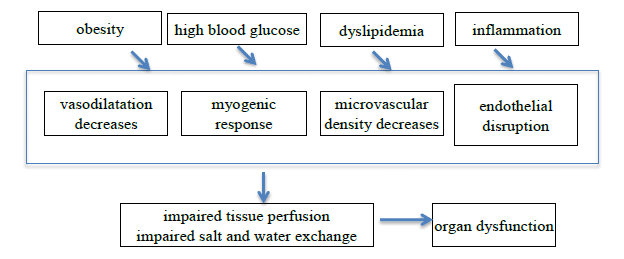VI.1. The role of the endothelium
The MetS can be seen as an infection manifested in adulthood. The various genetic tests suggest that the reasons should be looked for in the child’s development. Significant correlations have been confirmed between a decreased birth weight, CVDs and T2DM. The focus is on the early development of the regulatory systems such as the SNS and the hypothalamo-pituitary adrenal axis. The developmental plasticity of the tissues plays a key role during prenatal and postnatal development. Besides the muscle and adipose tissue, the role of the endothelium is very important. The endothelium weighs about 1 kg in adults, with an area of >6000 m2. Its main role is to ensure the exchange of gases and nutrition between the blood and the cells. It produces important secretions, such as NO and prostacyclin, which promote the autocrine regulation. It plays a role in the regulation of smooth muscle cell division. A change in the endothelial function is a main risk factor for CVDs, which may lead to high BP and insulin resistance in the future (Fig. 20).

Figure 20. The roles of the endothelium